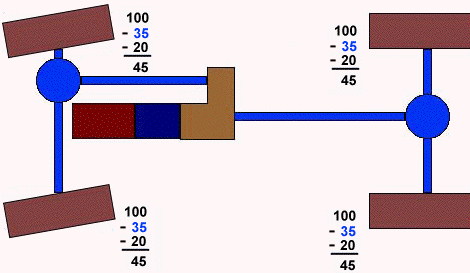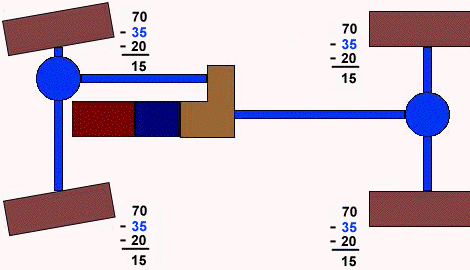ABS
© 1997-2011 H. Pietschmann |
|
Use of traction in 4WD in a turn |
|
There is a second force aside from torque that is eating away our traction account: Lateral force. Whenever you go into a turn traction is counteracting the lateral force (centrifugal force) in order to keep the vehicle on it's intended path. Example here: Surface is dry, traction account is 400, torque is using up 140, once you go into the turn 20 units of lateral force per tire eat away from the 400, leaving a safety margin of 180 (400 -120 -80). Suddenly you spot a patch of sand on the surface of the turn, traction value maybe 70 per tire, making it 280 for the 4 powered tires. 280 minus 140 minus 80 leaves you still with a safety margin of 60. Demonstrating that with full time 4WD you round that turn like on rails even with occasional patches of sand, mud etc. So yes, 4WD is safer when it comes to rounding turns and road conditions have changed. Consider yourself lucky if you have a vehicle with fulltime 4WD plus traction and stability management like the Mercedes-Benz M-Class. With those systems uneven loss of traction does not translate into loss of directional stability anymore. | 4WD layouts | crawl ratio | 4WD components | Need for more torque and traction management in a 2WD vs 4WD The "pumpkins" in the picture above are the differentials. |

